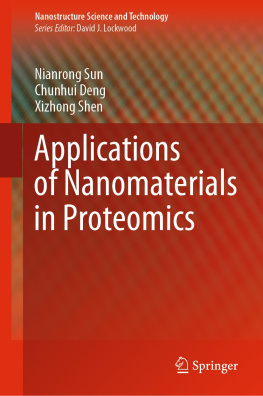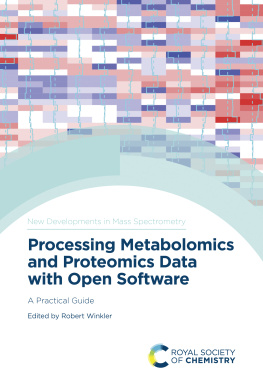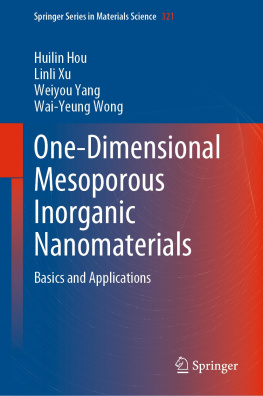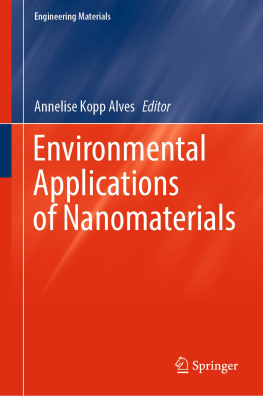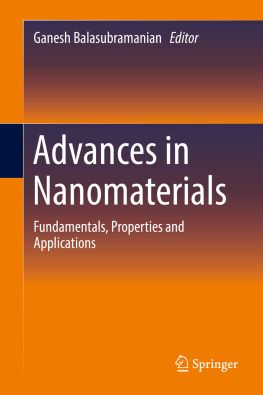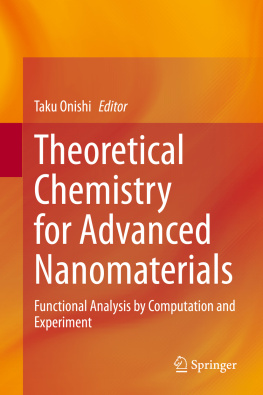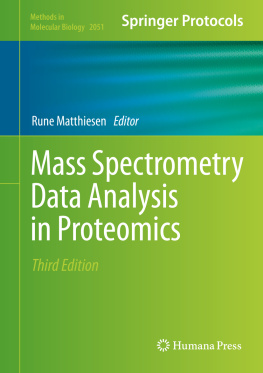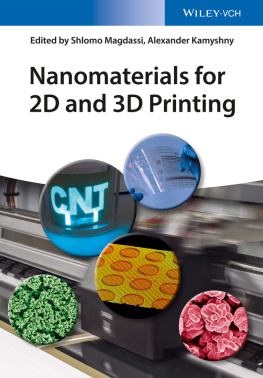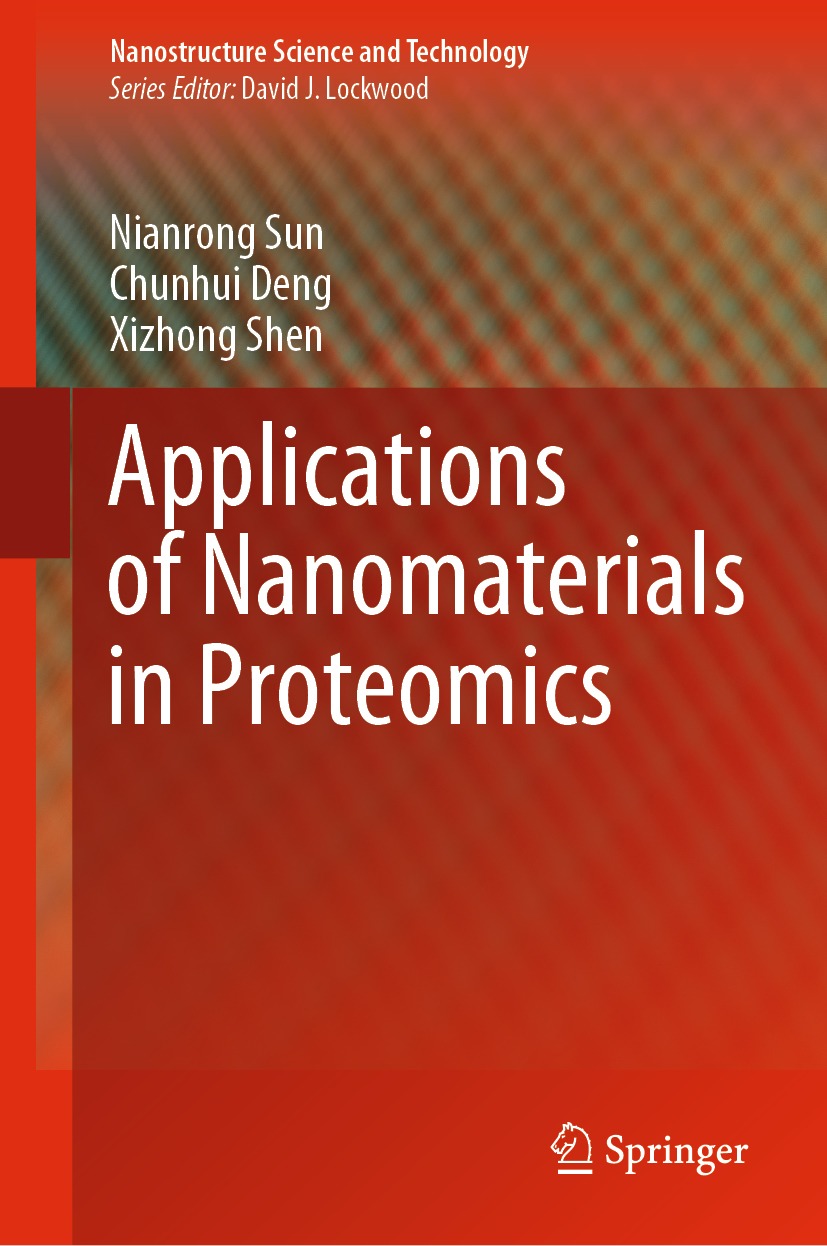Nianrong Sun
Zhongshan Hospital, Fudan University, Shanghai, China
Chunhui Deng
Department of Chemistry, Fudan University, Shanghai, China
Xizhong Shen
Zhongshan Hospital, Fudan University, Shanghai, China
ISSN 1571-5744 e-ISSN 2197-7976
Nanostructure Science and Technology
ISBN 978-981-16-5815-0 e-ISBN 978-981-16-5816-7
https://doi.org/10.1007/978-981-16-5816-7
The Editor(s) (if applicable) and The Author(s), under exclusive license to Springer Nature Singapore Pte Ltd. 2021
This work is subject to copyright. All rights are solely and exclusively licensed by the Publisher, whether the whole or part of the material is concerned, specifically the rights of translation, reprinting, reuse of illustrations, recitation, broadcasting, reproduction on microfilms or in any other physical way, and transmission or information storage and retrieval, electronic adaptation, computer software, or by similar or dissimilar methodology now known or hereafter developed.
The use of general descriptive names, registered names, trademarks, service marks, etc. in this publication does not imply, even in the absence of a specific statement, that such names are exempt from the relevant protective laws and regulations and therefore free for general use.
The publisher, the authors and the editors are safe to assume that the advice and information in this book are believed to be true and accurate at the date of publication. Neither the publisher nor the authors or the editors give a warranty, expressed or implied, with respect to the material contained herein or for any errors or omissions that may have been made. The publisher remains neutral with regard to jurisdictional claims in published maps and institutional affiliations.
This Springer imprint is published by the registered company Springer Nature Singapore Pte Ltd.
The registered company address is: 152 Beach Road, #21-01/04 Gateway East, Singapore 189721, Singapore
Preface
Proteome refers to all kinds of proteins expressed in a genome, a cell or a tissue under specific physiological and pathological conditions. Proteomics refers to the large-scale research on the structure, function and characteristics of proteins. Its main research content includes protein expression patterns, protein post-translational modifications (PTMs), proteinprotein interactions and so on; its main object is the whole organism (yeast, bacteria, etc.) or the cancer cell line that can reproduce indefinitely; its main research purpose is to systematically and comprehensively understand the important life processes, such as the occurrence and development of diseases, and cell metabolism, at the protein level. As well known, the research objects of proteomics are dynamic and variable, and more complex than genomics. Nevertheless, the rapid development of proteomics is still visible to the naked eye. Although the concept proposal of proteomics is no more than 30 years, it has been widely employed in the fields of biology, medicine and pathology research. More importantly, it has gradually been a strong driving force for advancing precision medicine.
For the currently high status of proteomics, mass spectrometry technology contributes a lot because of high sensitivity, high throughput and high accuracy and so forth. It is no exaggeration to say mass spectrometry technology is the most powerful tool in proteomics research. However, direct analysis of sample by mass spectrometry always encounters challenge due to the sample complexity and the low abundance of targeted analytes. Even more severely, PTM proteomes such as glycosylated and phosphorylated proteomes exhibit quite poor ionization efficiency during mass spectrometry analysis, intensifying the identification difficulty. The improvement of mass spectrometry technology and the reduction of sample complexity can well solve this problem. Obviously, the latter is a better choice since the former is high cost and relatively time-consuming. As a consequence, sample pretreatment approaches attract much attention, which separate targeted analytes from complex sample for increasing their relative abundance prior to mass spectrometry analysis.
Owing to many advantages such as great flexibility in both preparation and functionalization, low-cost, large specific surface area, nanomaterials become the promising adsorbents in separation field including proteome separation. From the research present, nanomaterials play an important role in in establishment of sample pretreatment approach in proteomics, greatly promoting the development of proteomics, especially glycosylated and phosphorylated proteomics. By the way, the latest researches also show the availability of nanomaterials in other PTM proteomics, which require more exploration. Here, we will summarize and describe the application of nanomaterials in proteomic analysis systematically through integrating research examples published in international journals in the past ten years. On the one hand, we expect to enable readers to relatively completely understand the principles, methods and applications of nanomaterials in proteomics analysis, so as to facilitate optimization and improvement of current approaches, developing more mature and universal standard. On the other hand, we wish to provide a certain reference for readers to develop new methods and techniques for proteomics including other PTM proteomics. Moreover, we hope that this book can offer assistance to the exploitation of one-stop analysis platform consisting of standardized, multimodal, automated sample preparation, thereby progressing with high-throughput analysis of large-cohort proteome. We believe the application of nanomaterials will further promote the progress of proteomics methods for precision medicine and certainly have a significant impact on the future life sciences and health care.
This book includes seven chapters. Chapter gives a brief conclusion and outlook on the application nanomaterials in proteomics.
This book has referred to many books and literatures, part of which is the introduction of our research work. Whatever, nanomaterials and proteomics are developing rapidly. The information and data collected in this book are inevitably incomplete due to limited time and energy. As for the content of this book, it is more inevitable that there are omissions or fallacies, and readers are expected to give criticism and correction. Herein, I would like to express my special feeling of gratitude to Prof. Chunhui Deng and Prof. Xiangmin Zhang of Fudan University who led me into proteomics and always provide assistance. In the process of writing, Prof. Chunhui Deng and Prof. Xizhong Shen gave their unqualified support and devoted intense efforts. In addition, I would like to appreciate the support from the National Natural Science Foundation of China and Shanghai Sailing Program.

